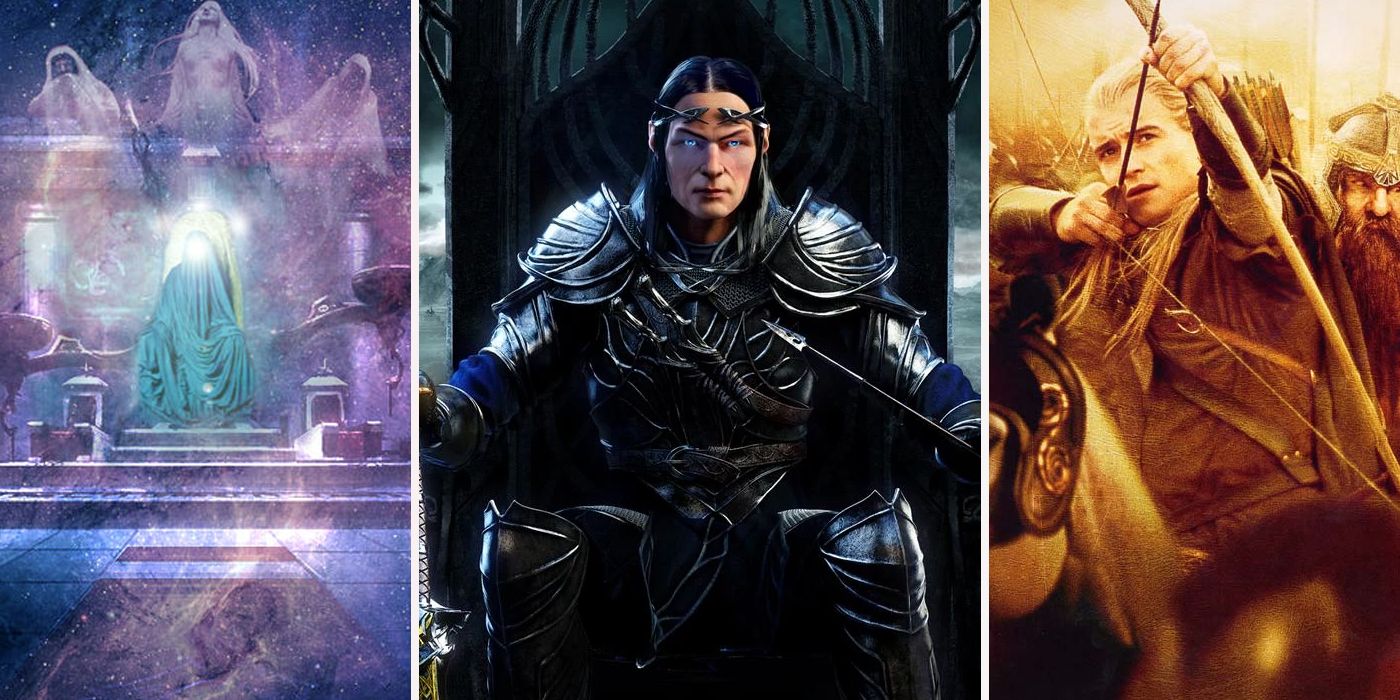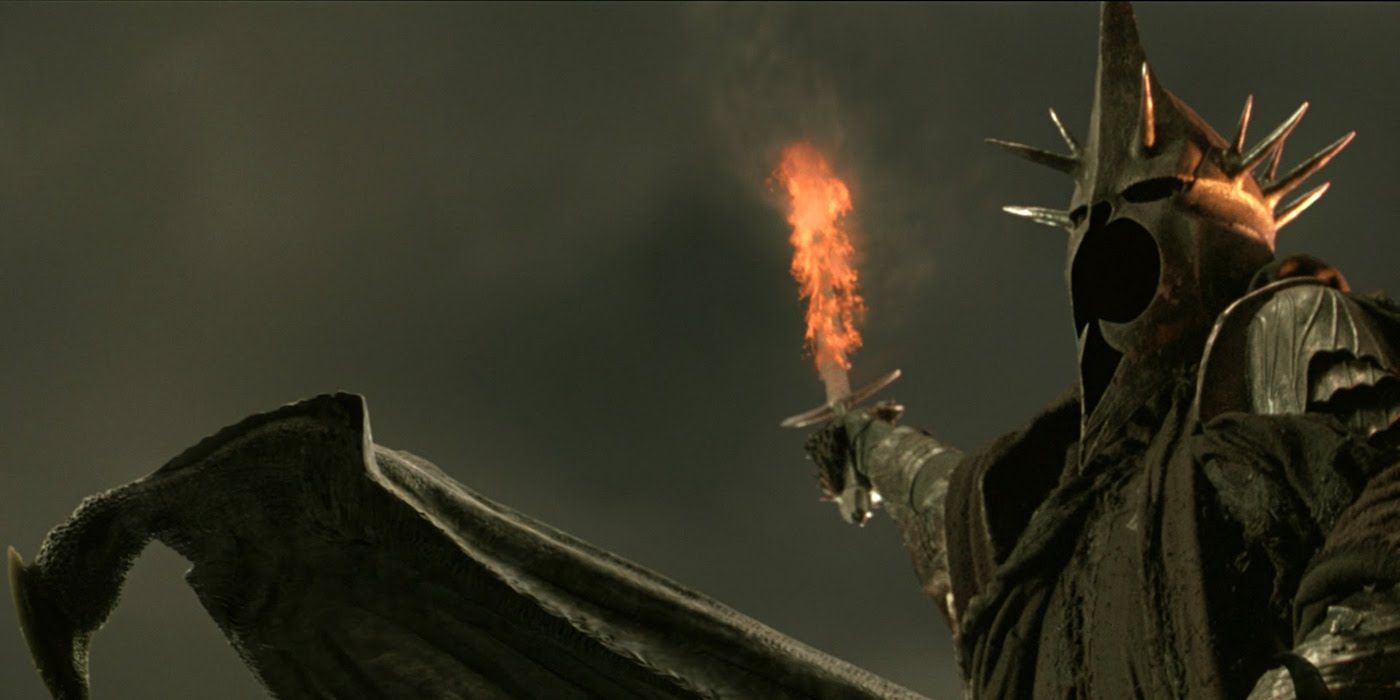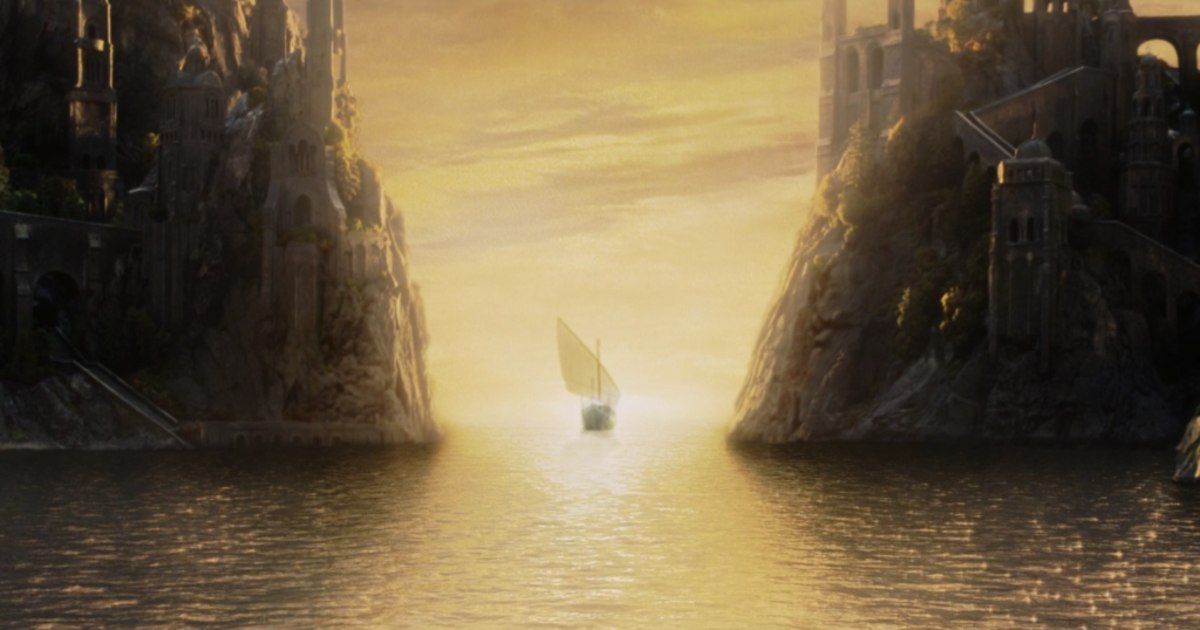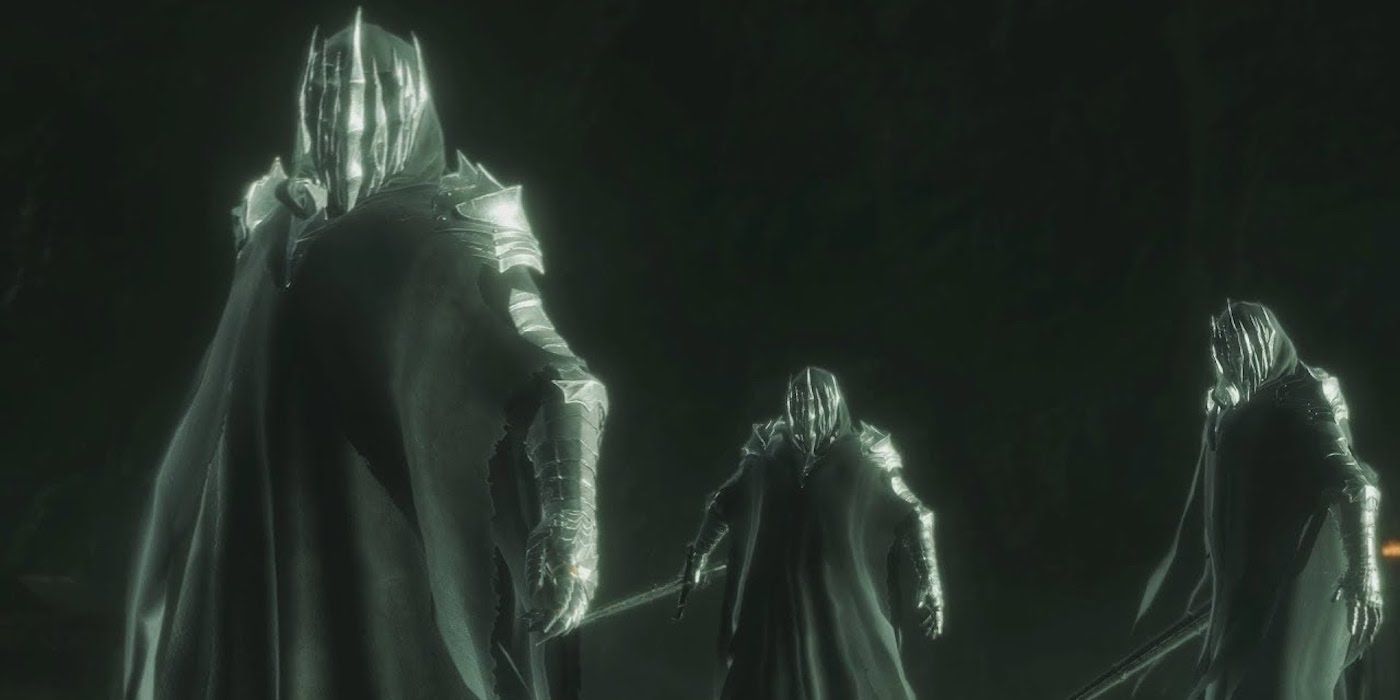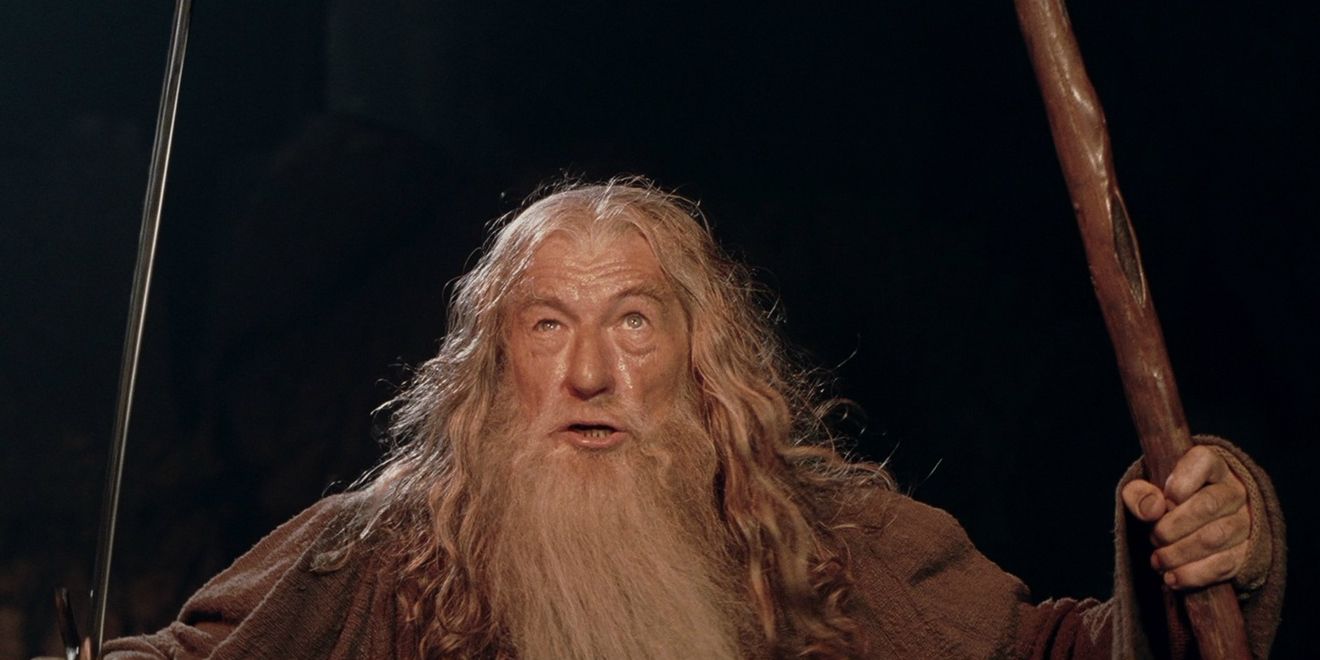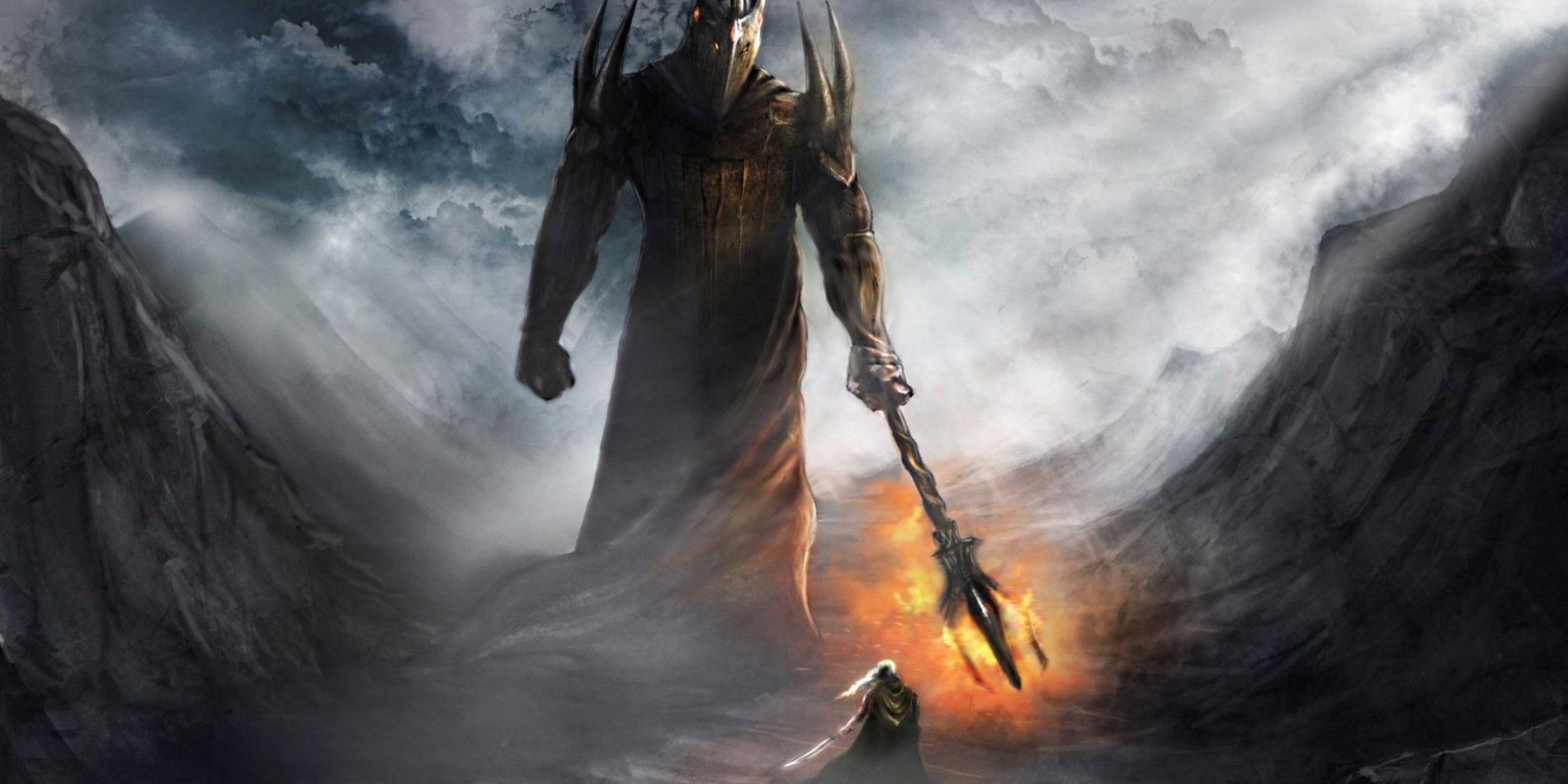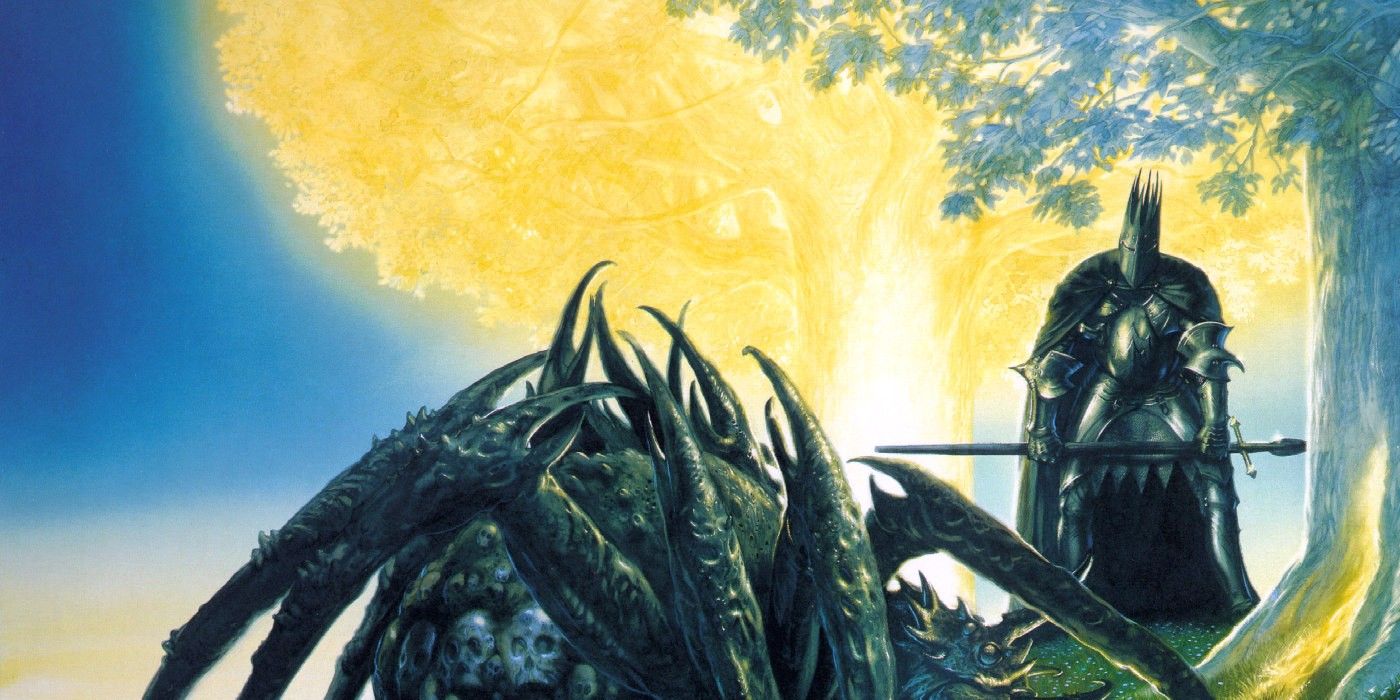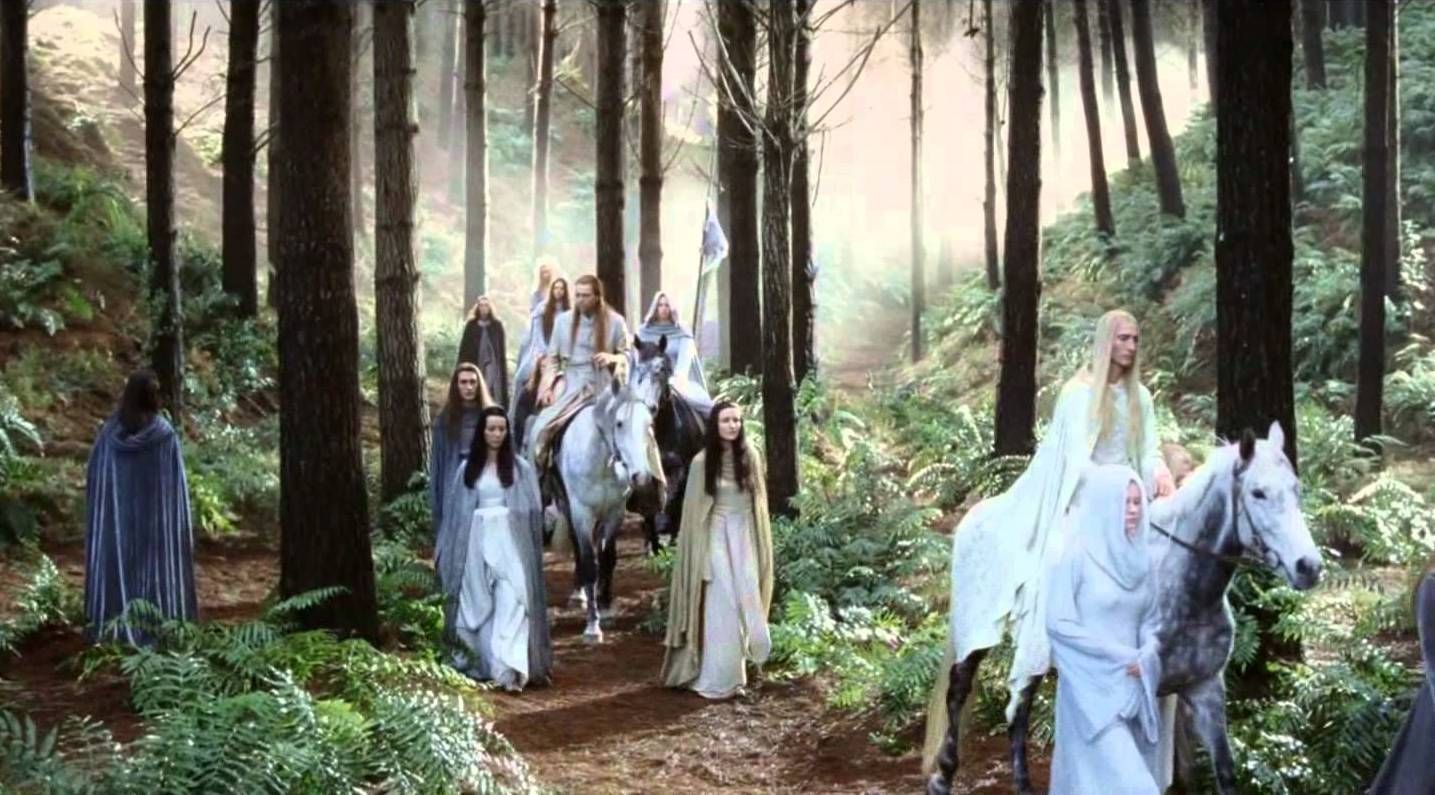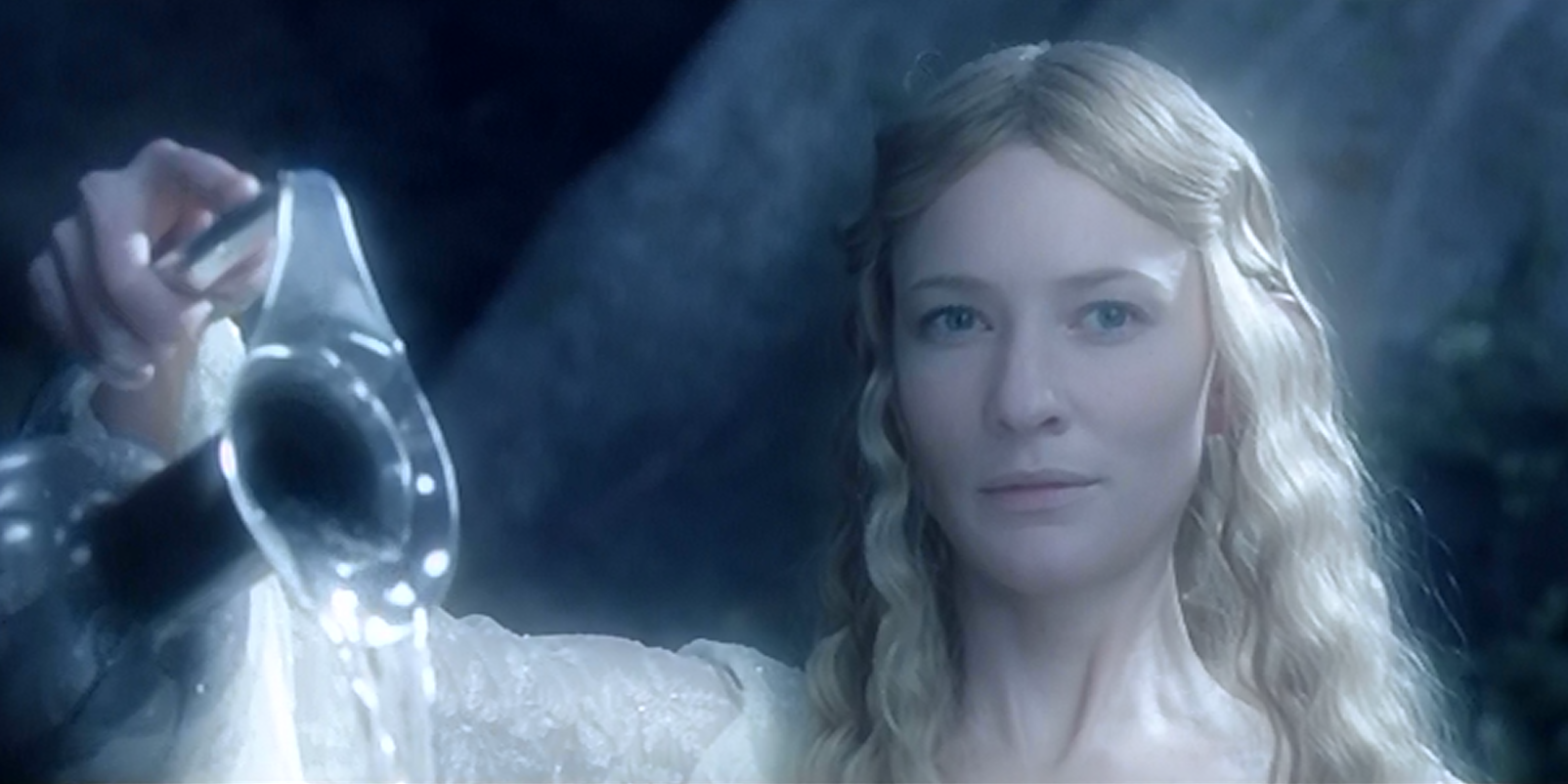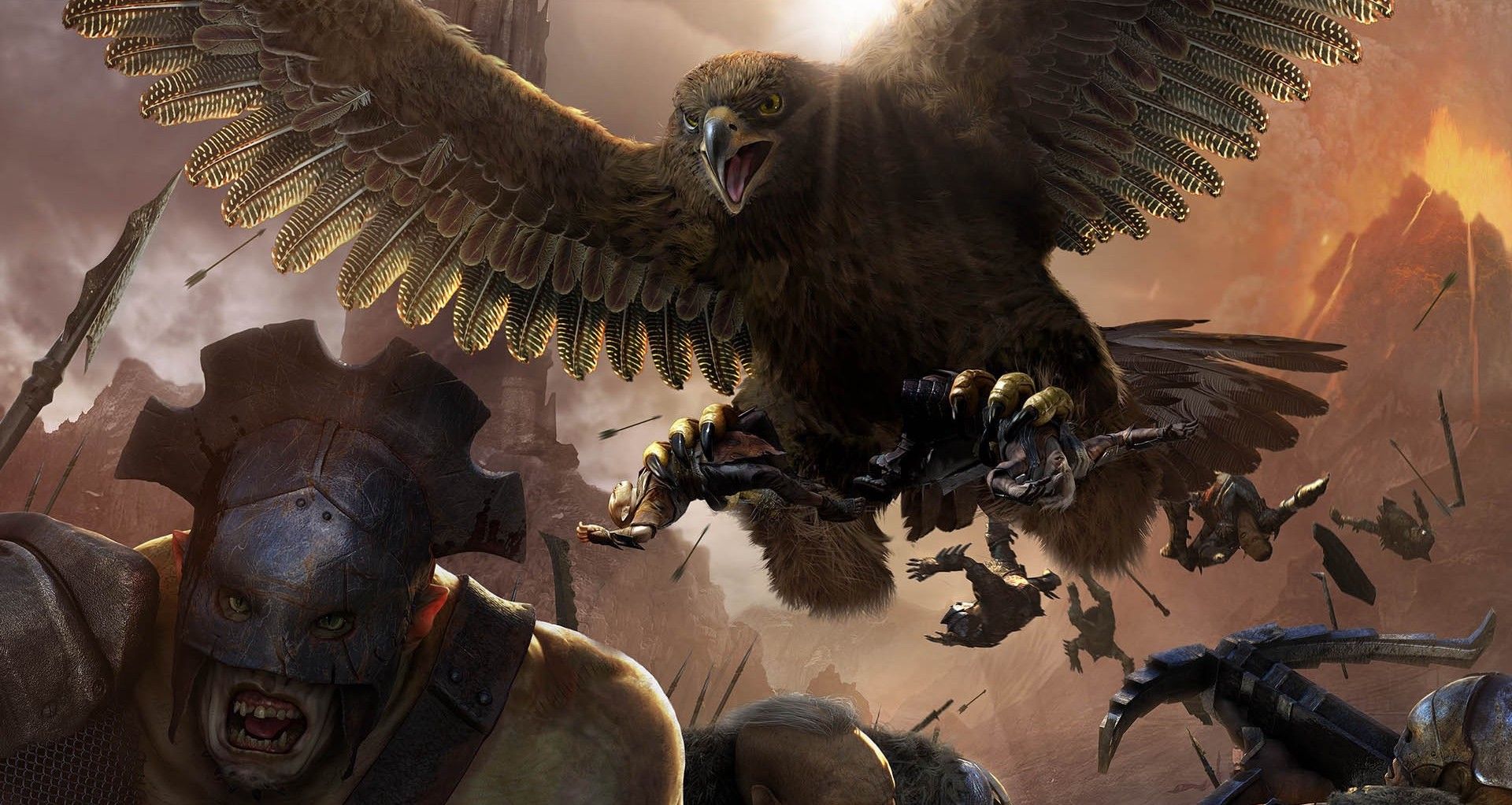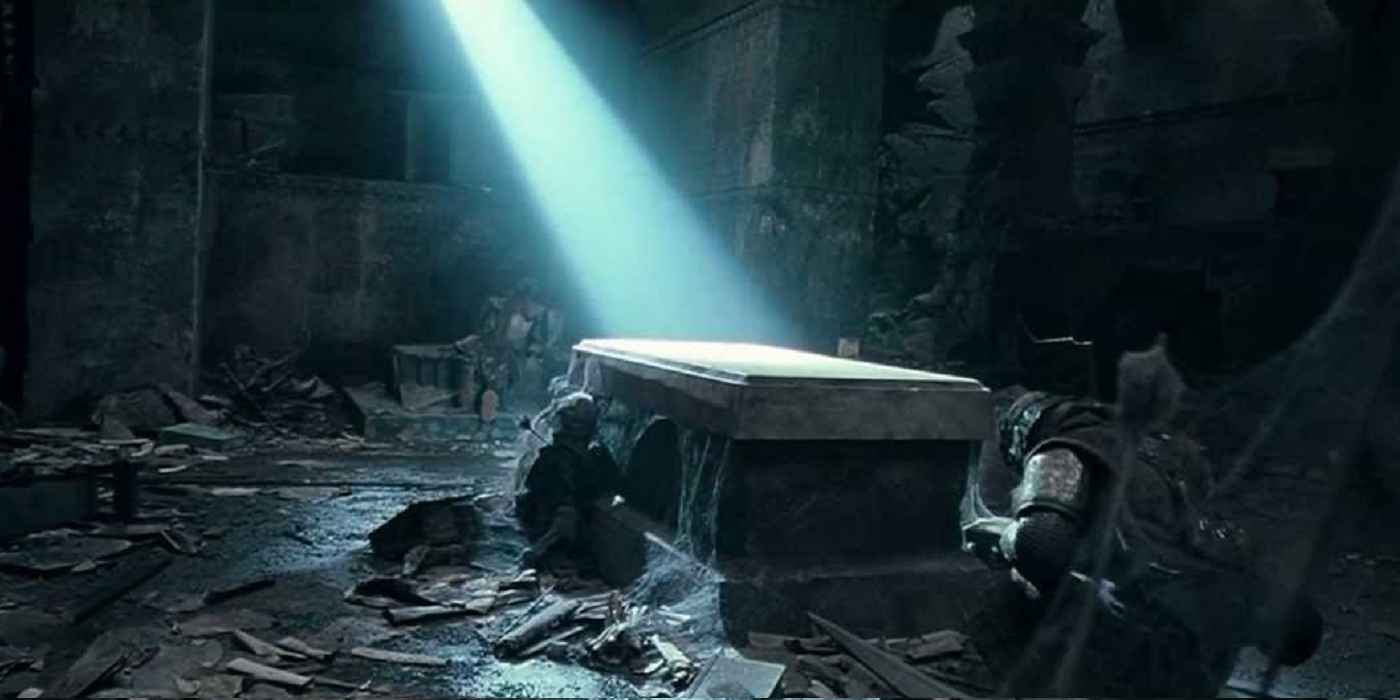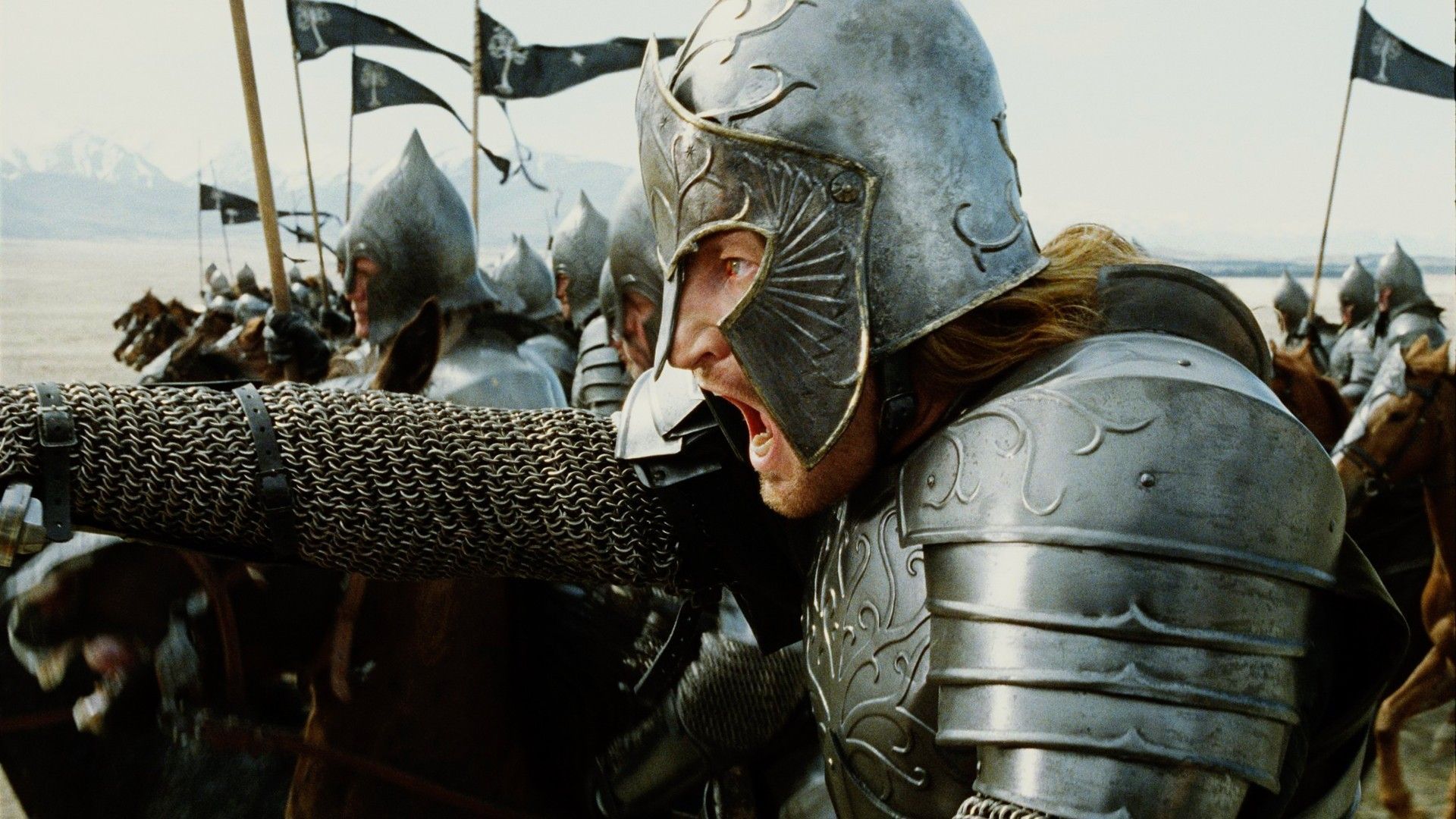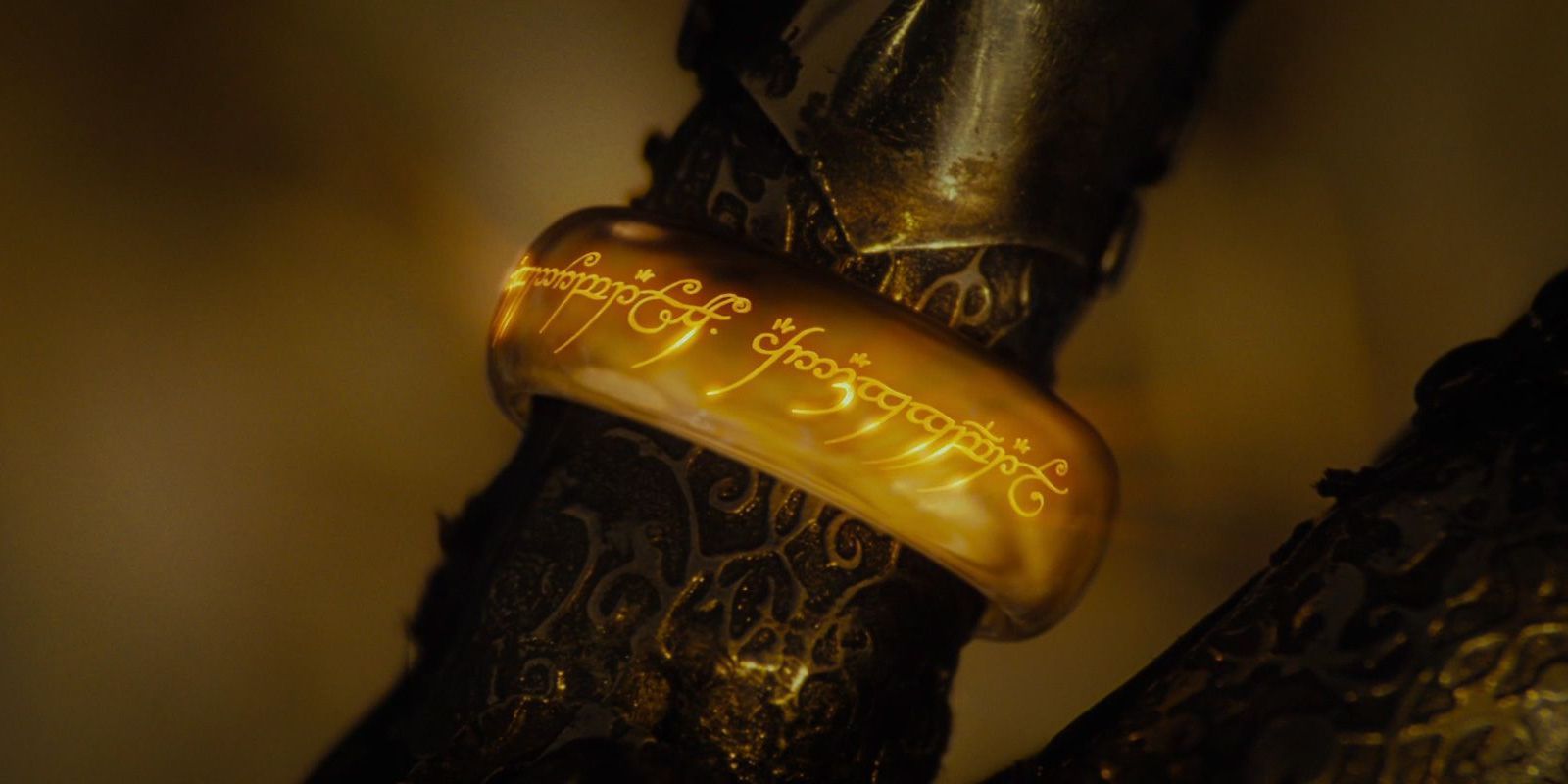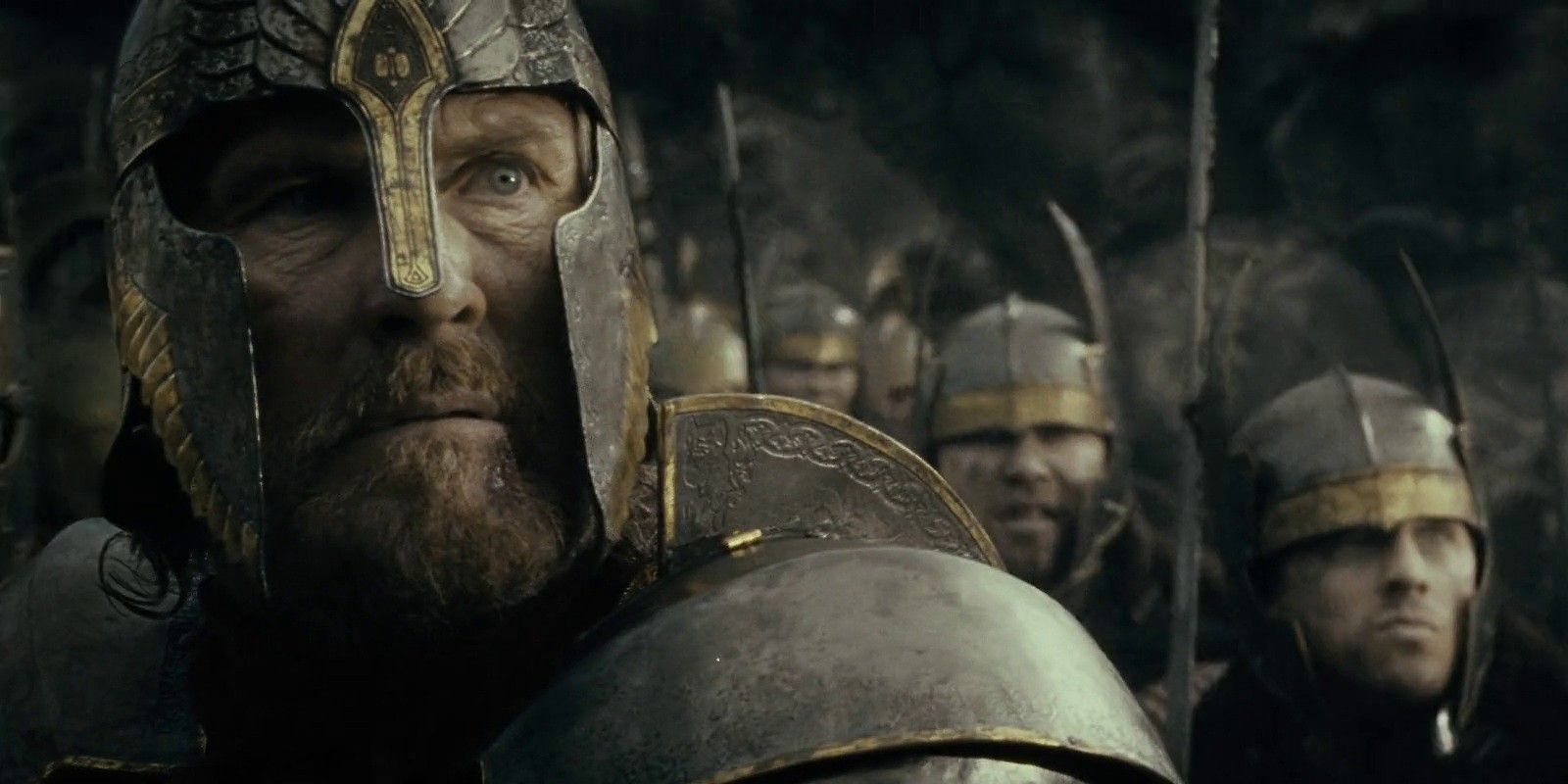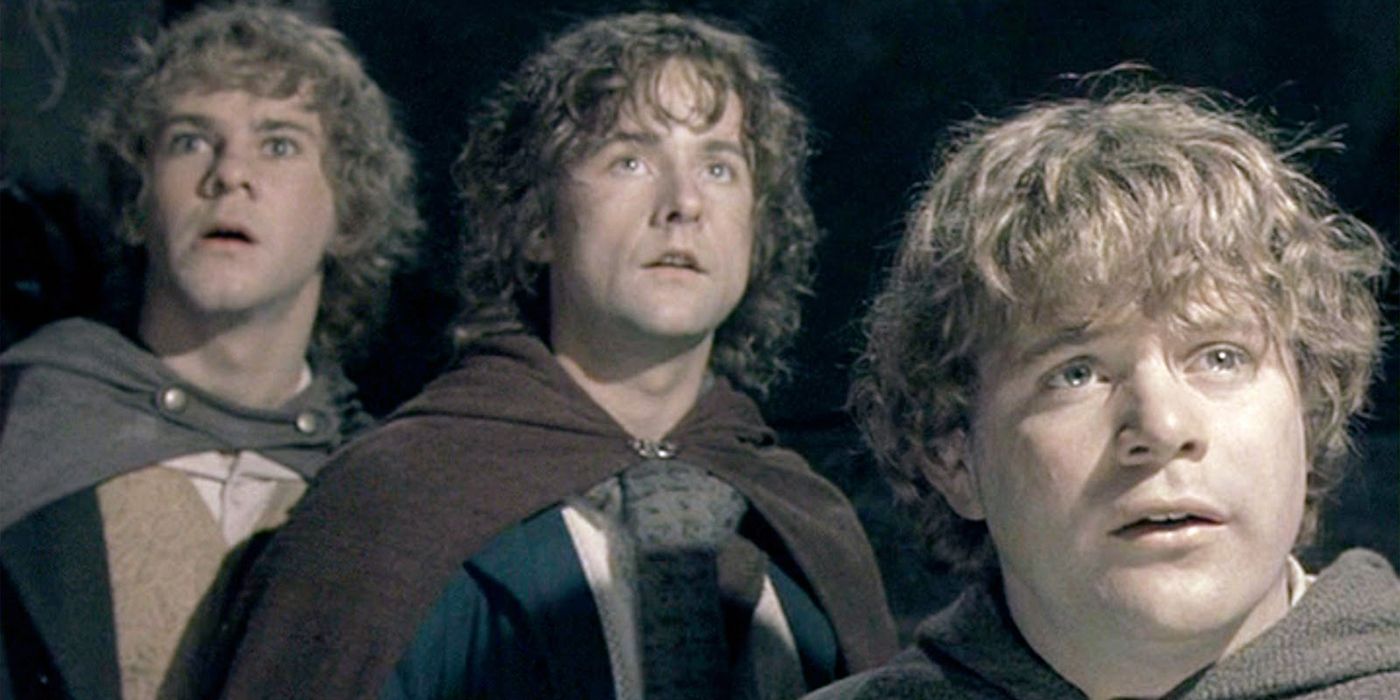With Amazon formally announcing that a prequel television series based on Middle-earth is in the works, curiosity is high as to what the story might be, and there would be absolutely no shortage of material to draw from.
The backstory of Tolkien’s high fantasy world is vast and deep. It draws from plenty of real world religions and mythologies and covers thousands of years. Most of it is barely mentioned in the Hobbit and the Lord of the Rings movies.
Part of this was just a matter of practically for Peter Jackson and the filmmakers. However, Tolkien’s writings have a long editorial history, including several important works published by his son Christopher after J.R.R. Tolkien’s death.
Thankfully, you can count on the fans of this long and storied series to keep meticulous order on all canon Middle-earth material.
Until we know more about Amazon’s Lord of the Rings prequel, it could take place at any point in the timeline of Middle-earth. This is a bit of a crash course on some of the highlights-- some of them are sure to be referenced or even essential when it’s finally released.
Here are the 15 Things You Didn’t Know Happened in Lord of the Rings Before The Hobbit!
15. THE LORD OF THE NAZGÛL FOUNDS THE KINGDOM OF ANGMAR
By the late Second Age of Middle-earth, the nine Kings of Men who had accepted Sauron’s rings of power had transformed into the Nazgûl. They had disappeared along with their master when Sauron was defeated by the Last Alliance.
For more than a thousand years, Sauron and the Nazgûl were absent from Middle-earth. When Sauron was finally strong enough to summon his foremost servants again, he tasked the Lord of the Nazgûl with establishing a kingdom in the North to sabotage and subdue Arnor, one of the last Kingdoms of Men.
The Lord of the Nazgûl became the Witch-king of Angmar. His realm repeatedly laid siege to the dwarves and men within Arnor and drove them out of power and prominence. Hundreds of years later Gondor managed to force the Witch-king to flee back to Mordor, but the damage had been done.
14. THE MUSIC OF ERU ILÚVATAR AND THE AINUR
Although he is not mentioned by name in Tolkien’s more famous works, Eru Ilúvatar is the supreme deity of the world in which Middle-earth exists. He is a transcendent being outside of the physical world.
In the beginning, Eru brought angelic beings to life called the Ainur. He bade the Ainur to sing to him, and in concert, they created the Timeless Halls where Eru resides, and the Eä, or the “World and All That Is.”
Eru also described his vision for a physical world within Eä called Arda. He permited the Ainur to go forth into the world of Arda and shape it as they saw fit. Those that took up Eru’s request became the Valar. Arda is the wider world that would eventually contain Middle-earth and all the peoples and creatures within it.
13. THE FIRST WAR WITH MELKOR
Melkor was the most powerful and curious of the Ainur that Eru Ilúvatar created in the beginning. He most often ventured forth on his own to explore the void outside the Timeless Halls and grew frustrated and unsatisfied. He concocted his own ideas about what creation would eventually be like.
When Eru and the rest of the Ainur sang of Eä and Arda, Melkor added his own themes, which created discord in the music. Eru rebuked Melkor, reminding him that as his brain-child, even his discordant themes ultimately came back to reinforce Eru’s own vision, not Melkor’s. Melkor hid his anger at this shaming.
When the Ainur arrived in Arda as the Valar, Melkor followed, proclaiming that Arda would be his kingdom alone. Wherever the Valar tried to make order and growth in Arda, Melkor sewed chaos and destruction. This First War with Melkor lasted until the mighty Tulkas of the Ainur arrived in Arda and fought Melkor away.
12. THE ISTARI ARE DISPATCHED TO MIDDLE-EARTH
Within the first thousand years of the Third Age of Middle-earth, the weakened Sauron had taken up residence in the abandoned fortress of Dol Guldur. Around that same time, the Leader of the Valar, Manwë, became aware of Sauron’s return and summoned five of the lesser angelic beings, or Maiar.
These Maiar, who became the Order of the Istari, were dispatched to Middle-earth in corporeal form to rally the free peoples of Middle-earth and prepare them for Sauron’s inevitable return to full power.
The Istari included Saruman the White, Gandalf the Gray and Radagast the Brown, as well as Allatar and Pallando, the two Blue Wizards. Gandalf was originally reluctant to take up this task; he feared Sauron, claiming that he was too weak compared to the Dark Lord.
However, Manwë convinced him that overcoming that fear was in fact the best reason he should embark to Middle-earth.
11. SAURON JOINS MELKOR TO DESTROY THE TWO LAMPS
After Melkor was banished from Arda in the first War, he continued to secretly sow his discord among several of the other lesser beings created by Eru. The Maiar were other primordial spirits of lesser power than the Valar and served as their disciples.
Prominent among these was Sauron, known as Mairon at the time. He was a disciple of the Valar called Aulë who practiced craftsmanship. Mairon was ambitious and saw an opportunity to grow his power much faster by allying himself with Melkor.
The Valar had made two great lamps to bring light to Arda-- one at the northern end of the world and one at the southern end. After establishing his own hidden stronghold in Arda, Melkor lashed out again with his loyal Maiar and destroyed the two lamps.
Their collapse and the loss of their light devastated Arda. The tumult was so great that the Valar retreated to the far western continent of Aman. In their absence Melkor gained free reign over Middle-earth for a time and Sauron became his top lieutenant.
10. THE TREES OF VALINOR BECOME THE SUN AND THE MOON
The Valar’s second attempt to bring light to Arda and their realm of Valinor in particular was the Two Trees of Valinor. Sang into existence by the Valar Yavanna, these two magnificent trees were named Laurelin and Telperion. Laurelin was golden and said to be female, while Telperion was silver and said to be male.
Once again, Melkor’s treachery proved to be their undoing. The Valar had captured Melkor and imprisoned him for ages. When he was released, he appeared to be repentant.
Only after going free did he seek out the Elves, Eru’s prized first children, and sought to corrupt them as vengeance. He also encountered the primordial spider Ungoliant, whose hunger for light to fill the infinite emptiness within her being was insatiable.
While the Valar held a festival around the Two Trees, Melkor and Ungoliant attacked. He shoved a spear into their bark and let Ungoliant drink deep from their light, which poised and ultimately destroyed the trees.
To salvage the light for Arda, Yavanna and the Valar collected the last fruit of Laurelin and the last flower of Telperion. They became the Sun and the Moon respectively.
9. THE SUNDERING OF THE ELVES
The Elves were the first sapient beings created by Eru to awaken in Middle-earth. According to the mythic origins they awoke in small groups throughout the shores of the Bay of Cuiviénen in the far east of Middle-earth. They united as they walked through the forests and composed music and poetry.
The elves were content except for some who appeared to be abducted by a Rider. It is widely believed that the Rider was a servant of Melkor, who captured stray elves and corrupted them into the first Orcs.
Fortunately for the Elves, they were discovered in Middle-earth by Oromë of the Valar. He invited them to journey across Middle-earth and the great Sea of Belegaer and come to Valinor and witness the light of the Two Trees of Valinor.
Those who did embark on the Great Journey became known as the Eldar or Elves of Light, while those who refused and remained became Avari or the Unwilling. Many distinct tribes of Elves branched off from these groups as time went on, even coming into conflict with each other at times.
8. THE FIRST ELVEN KINSLAYING
After destroying the Trees of Valinor, Melkor hid by sneaking into the Fortress of Formenos and killing the Elven king Finwë. From Finwë’s vaults, he stole the precious Silmaril jewels, which contained the light essence of the Trees of Valinor. Fëanor, son of Finwë, came upon his father’s corpse and cursed Melkor with the name Morgoth, “Dark Enemy."
Fëanor rallied all the elves of his tribe, the Ñoldor, and swore an oath that they would establish their own kingdoms in Middle-earth, defeat Morgoth and take back the Silmarils. In their righteous haste they demanded of their kin, the Teleri tribe, to hand over their ships, to facilitate their sea crossing.
However, the Valar had forbid any elves to return to Middle-earth and the Teleri would not disobey the Valar. It is unknown who drew first blood at the First Kinslaying, but the Ñoldor were cursed by the Valar as punishment and shunned by the other elves for many years after.
7. GALADRIEL TRAVELS TO MIDDLE-EARTH
Galadriel was born in Valinor on the continent of Aman across the sea from Middle-earth. She was the niece of Fëanor, who lead the Ñoldor elves in defiance of the Valar and sailed on stolen ships to Middle-earth in pursuit of Morgoth.
However, she did not take part in the First Eleven Kinslaying. Instead of crossing with the larger Ñoldor host, Galadriel and her people followed Fëanor’s half-brother Fingolfin in a perilous march across the Helcaraxë, the Grinding Ice.
The shifting, frozen, northern section of the Sea of Belegaer claimed the lives of many elves before they reached Middle-earth.
For her part Galadriel had heard of the vast, unclaimed wonders of Middle-earth and was among many of the Ñoldor elves who dreamt of claiming a domain of their own in that land. She would eventually become the Lady of Lothlórien and the keeper of one of the elven Rings of Power.
6. THE WAR OF WRATH AND THE DOWNFALL OF MORGOTH
The Elves and Men and Dwarves of Middle-earth who resisted Morgoth were on the brink of total defeat. The Valar still disapproved of the Elven Kinslaying but were persuaded to intervene by the pleas Eärendil, a half-elven seafarer and the Father of Elrond.
The Valar gathered the mightiest host of free peoples ever seen in Middle-earth and marched on Morgoth’s domain. The war dragged on for decades until the host of the Valar reached Morgoth’s castle of Angband.
In a final play, Morgoth unleashed his never-before-seen winged dragons; they decimated the free peoples with tempests of fire and lightning. The battle would have been lost if not for the arrival of Eärendil in his sky-ship (really) and (you guessed it) the Eagles.
In the end, Morgoth was captured, taken back to Aman, tried and convicted for his crimes, and beheaded. His body and spirit were banished to the Timeless Void through the Door of Night.
5. DURIN I FOUNDS THE KINGDOM OF KHAZAD-DÛM
The Dwarves were not created directly by the supreme diety Eru like Elves or Men, but rather by Aulë of the Valar. Aulë desired a people of his own that he might teach his ways of craftsmanship.
However, being of the Valar, Aulë was unable to give his creations life. Contrite for his impatience, he offered his creations to Eru to do with as he willed, and in turn Eru granted the Dwarves a life of their own. However the Dwarves were forbidden from awakening before Eru’s own first children, the Elves and the Men.
The first Dwarves were the Seven Fathers of the Dwarves and the most famous of them was Durin I. He journeyed into a vale in the Misty Mountains and came upon a pool in which he saw a reflection of himself with a crown of seven stars. On that lake, Durin made the Hall of Khazad-dum, from which the Kingdom of Moria would grow.
4. THE RISE AND DECLINE OF NÚMENOR
For their great valor in the final battle with Morgoth, the Edain of Middle-earth were granted an abode on the island of Númenor. Ulmo of the Valar raised the island up from the sea of Belegaer and its inhabitants became the Númenórean Men.
For a time, Númenor was peaceful and prosperous. But the Men grew envious of the Elves and their immortality. The Númenóreans built a ruthless maritime empire and conquered much of Middle-earth out of spite in greed.
Eventually, Sauron seized upon this natural fear and selfishness and convinced King Ar-Pharazôn of Númenor to worship Morgoth as a god, and even to make war against the Valar.
When the Númenor host landed on the shores of Aman, Eru separated Aman from the entire world of Arda, remade the world into a sphere and sank the Island of Númenor beneath the sea. Some of the faithful Númenóreans had been warned of the coming punishment and escaped to Middle-earth.
3. CELEBRIMBOR FORGES THE RINGS OF POWER
In the Second Age of Middle-earth, Sauron had donned the guise of Annatar, “Lord of Gifts." He had befriended the Elves and claimed to be an emissary of Aulë of the Valar who had come to teach the Elves how to make magic rings.
Celebrimbor was the foremost elven craftsman in Middle-earth and was suspicious of Annatar. But that did not stop the other Elves from following Annatar’s instructions.
Unbeknownst to the Elves, Sauron had forged the One Ring. Through this master ring, he hoped to influence all the other bearers of the lesser rings made with his instruction, including the elves.
Fortunately, the Elves realized Sauron’s intention and resisted his pull. The three great rings for the Elves, forged by Celebrimbor himself, were sent away for safe keeping.
2. ELENDIL FOUNDS THE KINGDOMS OF ARNOR AND GONDOR
Elendil was the son of the last King of Númenor and was among the Faithful to escape the sinking of the island. On only nine total ships, they sailed to the shores of Middle-earth.
Elendil and his sons Isildur and Anárion established the Kingdoms of Arnor in the North and Gondor in the South. Elendil had been gifted the Palantiri or “Seeing Stones," by the Teleri elves and they had also taken the seedling that would grow into the White Tree of Gondor.
Elendil ruled as the High King of Arnor and Gondor for hundreds of years and lead the Last Alliance of Elves and Men against Sauron late in the Second Age. In the Fellowship of the Ring film we see him fall in the battle to Sauron himself.
Isildur then took the broken hilt of the sword Narsil and severed the One Ring from Sauron’s finger.
1. HOBBITS MIGRATED TO THE SHIRE
The exact cosmic or genealogical origins of Hobbits in Middle-earth is unknown. They are believed to be related to Men, although they have visibly pointed ears like the elves. They also did not originate in the Shire, but rather along the valley of the river Anduin between the Misty Mountains and Mirkwood.
For unknown reasons-- possibly to escape the growing power of Sauron-- Hobbits migrated West and North early in the Third Age. The trek over the Misty Mountains was arduous, but they eventually reached Breeland and the western side of the Brandywine River.
The land that came to be known as the Shire was actually under the rule of Kings of Arnor at the time, but they granted the land to the Halflings in exchange for fealty and cooperation.
---
Are there any other facts about Middle-earth that you know happened before The Hobbit? Let us know in the comments!

